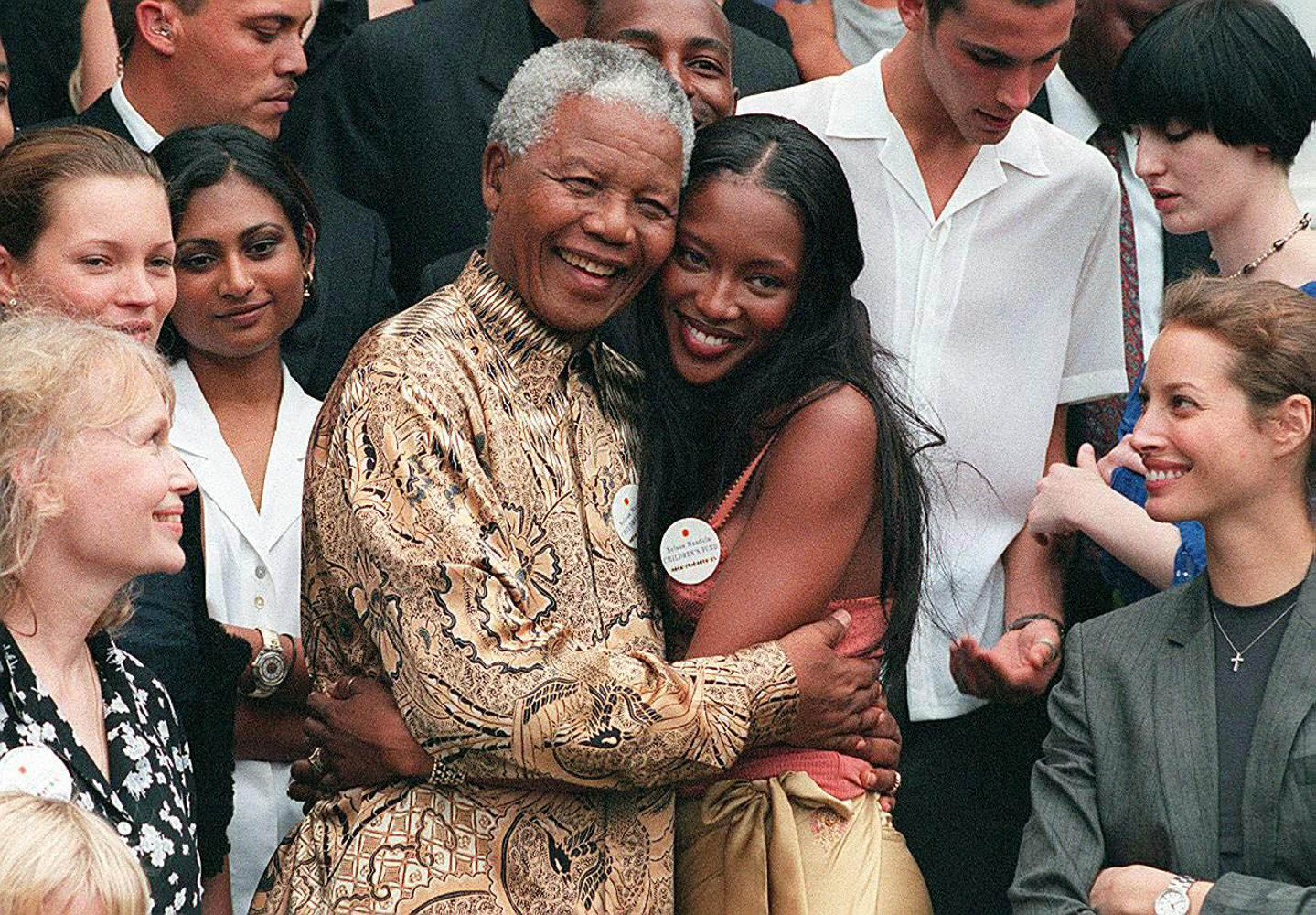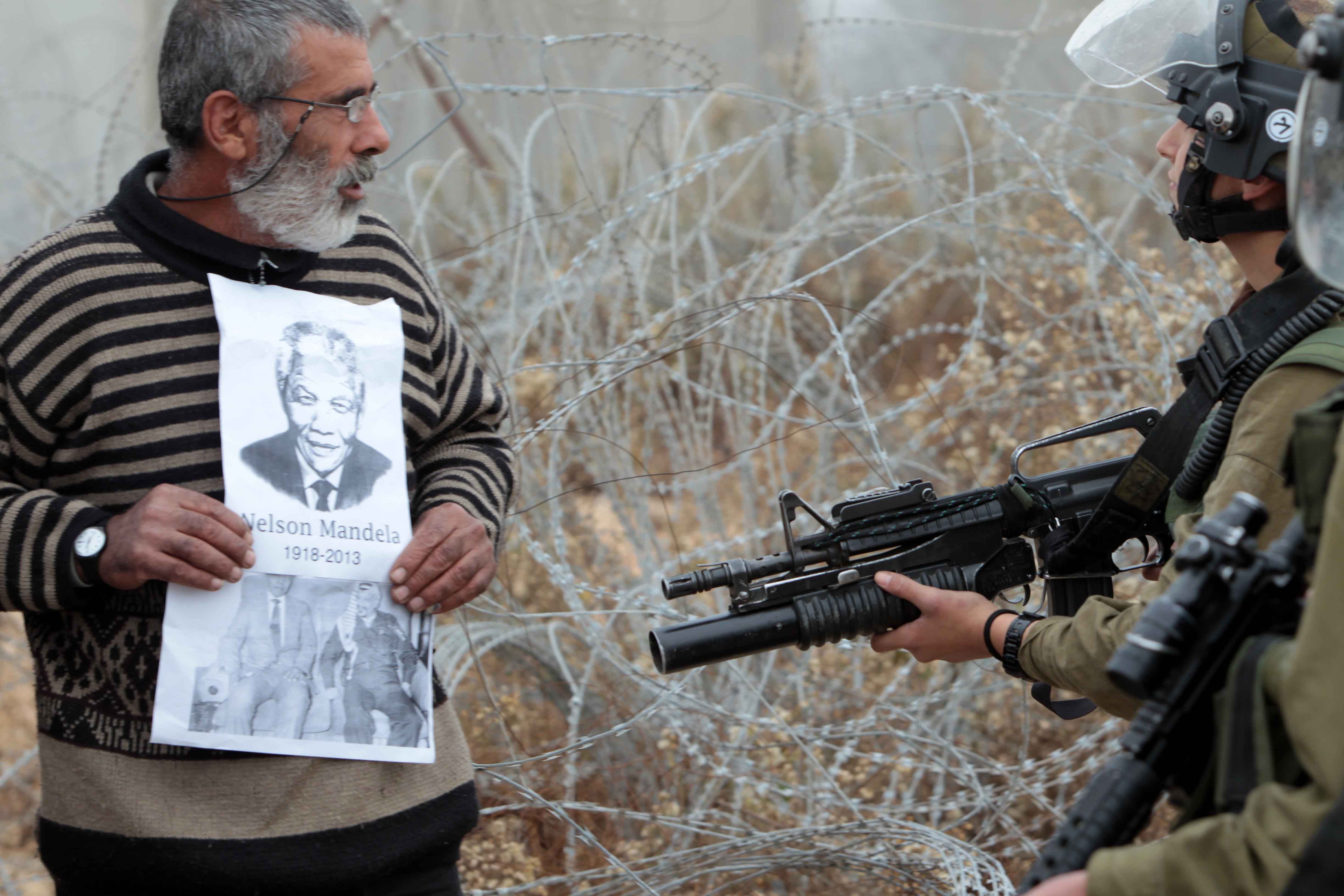
The world pays tribute to Mandela (slideshow)
As South Africans come to terms with the loss of former president Nelson Mandela, the rest of the world bids farewell to Madiba.
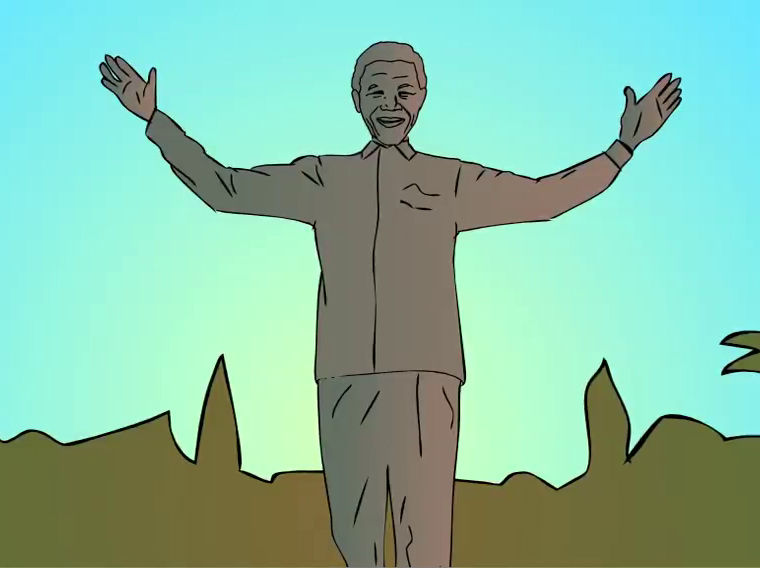
Pimples: Saving Madiba's rabbit (video)
Gwede, Mac and Blade try their best to stop the rabbit from whispering in Mandela's ear. But the elusive animal has some tricks up its sleeve.
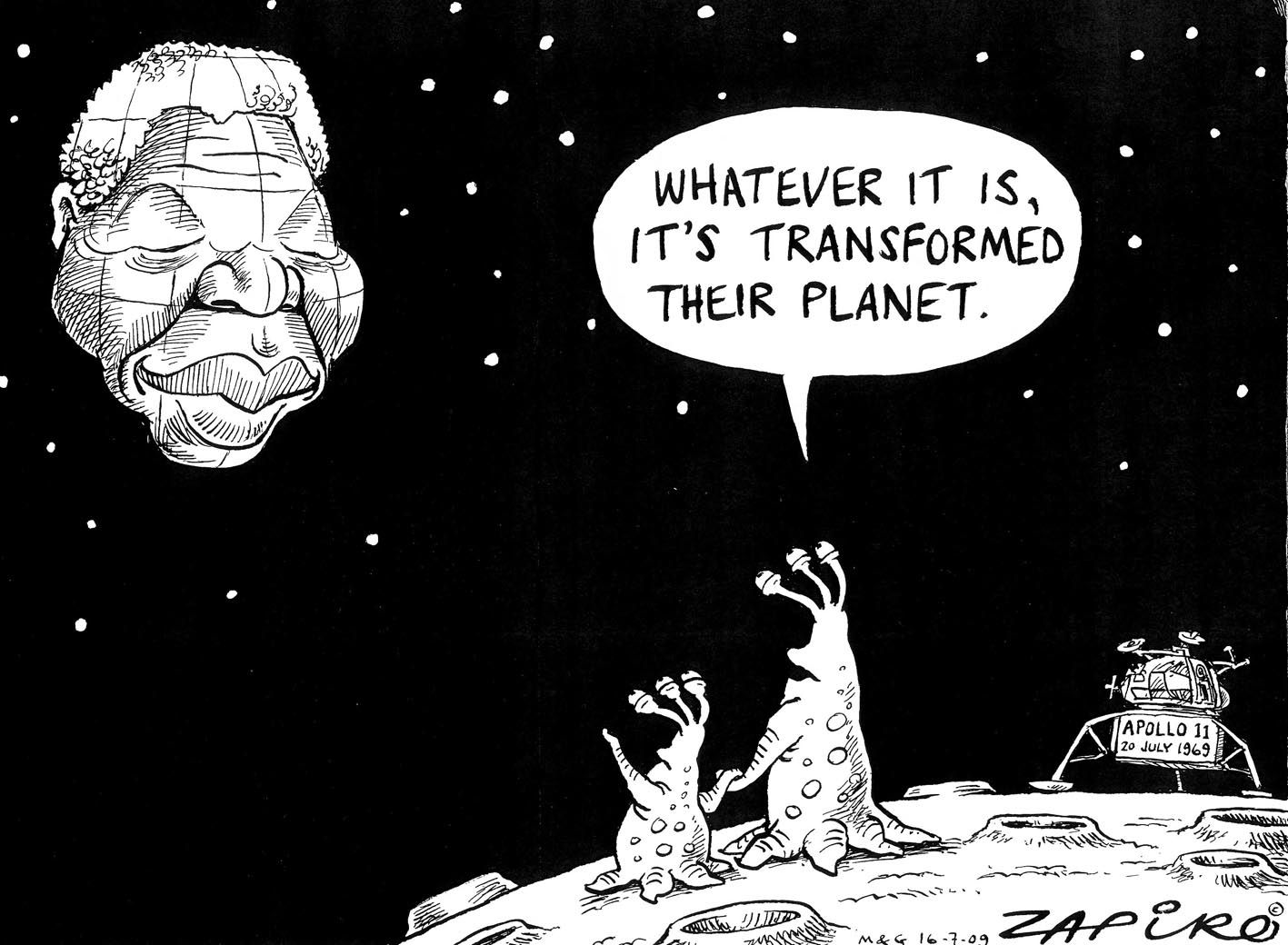
Zapiro's best Madiba cartoons (slideshow)
From his toughest moments to his most triumphant, Madiba has been an inspiration. Here are some of our favourite Zapiro cartoons about him from 1994 to 2013.
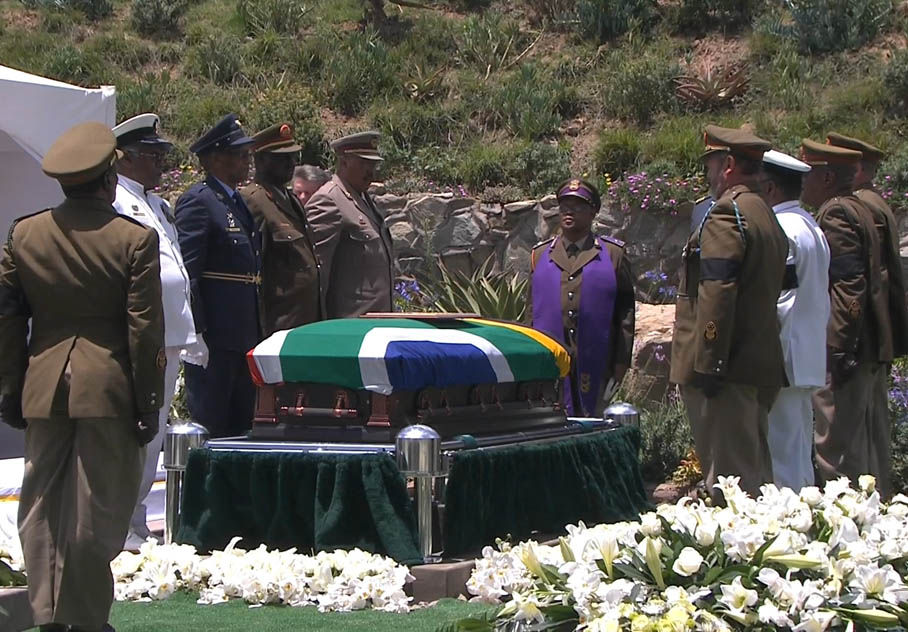
Mandela: SA's greatest son laid to rest (slideshow)
The world watched as Nelson Mandela was finally laid to rest in his hometown of Qunu following a dignified and moving funeral ceremony on Sunday.
Nelson Mandela had the authenticity and heft to restore a sense of gravitas to the model of former leaders at the nexus between diplomacy and global governance. Unlike the other hyper-empowered individuals who took this approach, Mandela was free of any trappings of political shortcomings, never mind failure.
After 27 years in jail under the South African apartheid regime, Mandela navigated a peaceful transition to majority rule. Although the transformation in policy terms was far from complete when he left the presidency after one term in office (1994–1999), his efforts were almost universally judged to be heroic. The moral authority his leadership brought to national reconciliation, whether through the Truth and Reconciliation Commission process or the rebranding of South Africa as a “rainbow nation”, was exemplary. Mandela (or, from his clan name, Madiba) stood alone with respect to the ability to leverage his iconic status.

The puzzle about Mandela embracing the set of activities highlighted in my book Diplomatic Afterlives was not his capabilities but his willingness to take such a role on. When he left office he had become an octogenarian, whereas Jimmy Carter began his presidential afterlife in his late 50s and Bill Clinton frequently depicted himself as being too young to be an elder statesman. Many commentators expected – and hoped – that Mandela would have an easier schedule in his remaining years, rather than embarking on an ambitious new form of engagement with public affairs.
Yet, rather than slowing down and “revelling in obscurity” as he told a May 1999 media gathering he would, Mandela embraced the former-leaders project in a dynamic and innovative fashion for a five-year period. In many respects, he served as a source of inspiration and animation for Clinton and Tony Blair by pushing the boundaries of what a high-profile, celebrated ex-leader could do.
Akin to Clinton and Blair, Mandela set up an array of organisations when he departed from formal politics: the Nelson Mandela Foundation (1999) and the Nelson Mandela Rhodes Foundation (2003). There was also a legacy component, notably the Nelson Mandela Centre of Memory, a Nelson Mandela Museum in Mthatha in the Eastern Cape, close to where he grew up, and a Mandela museum in Soweto established around the house where he lived before his imprisonment.
This sense of institutional expansion was reinforced by the broadening of the ambit of Mandela’s work, with its focus on education and health, especially in the area of HIV and Aids.
Close relationships with Clinton and Blair
In personal terms, Mandela built close relationships with Clinton and Blair. Although initially disappointed by the level of United States aid to South Africa in the years of transition, by the time Clinton joined Mandela as an ex-leader they were firm friends.
In 2003 Clinton and Mandela launched the Nelson Mandela Rhodes Foundation in London. And when Clinton delivered the first Nelson Mandela lecture in Johannesburg, he promised to devote “whatever time I have on Earth” to advance Mandela’s agenda.
Although his relationship with Blair was not as intimate, especially after the 2003 Iraq invasion, far from critiquing Blair in public (as he did with George Bush) Mandela encouraged the British prime minister to follow his lead in his political afterlife.
On Blair’s farewell tour of Africa, before he handed power over to Gordon Brown, Mandela pushed him to use his talents to do good in the world: “Tony, I look forward to welcoming a young man like you to the club of retired presidents and prime ministers. I need to warn you, however, that some of us only become active after stepping down. I know that your energy, passion and youth can still play a big role in international affairs.”
Notwithstanding this personal affinity, Mandela shared as much of Carter’s style as Clinton’s or Blair’s. If willing to embrace a wide variety of actors who were disconnected from the struggle against apartheid, Mandela was highly loyal about those whom he considered friends of the struggle, even if they were labelled rogue elements by the global power establishment.
Maintaining these connections added an element of contestation to his standing in the Western power elite.
Akin to other pivotal ex-leaders, Mandela had a duality about him. On the one hand, with the notable exception of Clinton, his approach was far more accessible to different sets of networks than other ex-leaders. Building on this, Mandela embraced an approach on public goods that meshed with the business- and celebrity-friendly model perfected by Clinton. On the other hand, he possessed a tremendous moral sway, with a sense of principled commitment that was closer to the Carter template.
Positions rooted in a confrontational outlook
Despite shifting explicitly to an orthodox strategy on issues in the health and education domains, Mandela maintained a number of positions that were rooted in a more confrontational outlook. He lauded Carter in a visit to Atlanta in October 1999, and stated the former US president’s presence was one of the prime reasons he had chosen to attend a conference in Atlanta on closing the “international poverty gap”.
Such a duality risked charges of dissimulation. In the public-goods domain of health and education, Mandela’s extended network included a disparate mix of stars from the entertainment world and figures from the business world. Buzz from connections with celebrities, such as television host and global opinion-setter Oprah Winfrey and supermodel Naomi Campbell, was blended with the bite of obtaining (albeit not for personal use) material resources from members of the corporate elite.
As one observer noted: “One characteristic Mr Mandela and Mr Clinton share is their ability to persuade the wealthy to part with money to fund an Aids clinic or to build a school in rural South Africa. Mr Mandela openly says he likes businesspeople because they never say ‘no’ to his appeals.”
In the diplomatic arena, by contrast, Mandela was willing to take gambles that threatened to alienate him from many in the Western mainstream who admired him in other respects. Although still sympathetic to Mandela’s mediating work in many crisis zones, including Burundi and East Timor, serious voices of disapproval mobilised against his sympathetic treatment of Muammar Gaddafi and other resistance leaders. Against the avuncular stereotyping, Mandela’s diplomacy went beyond social purpose to some elements of an anti-hegemonic approach.
The other major component of Mandela’s innovation was bringing in Africa as a central feature of the former-leaders approach. This is not to ignore the impact of other ex-leaders projecting their influence prior to the Mandela experience: the standout illustration here is Julius Nyerere, the respected former leader of Tanzania (in power from 1961 to 1985). Still, the dominant image of leaders on the continent remained that of the African “big man”, exemplified by Zimbab-we’s Robert Mugabe, holding on to power over decades by clientism and/or coercion.
Nyerere bent this model by eventually leaving office in a thought-out manner. But this departure was conditional, for Nyerere remained the chairman of his political party for another five years. Moreover, his ventures into global activities were, for the most part, through structured organisational activity, above all by his chairmanship of the independent International South Commission (1987 to 1990), as well as his ongoing position as chair of the South Centre.
His main link with Mandela’s more varied and autonomous repertoire was in his work as chief mediator in the Burundi conflict in 1996, a role Mandela subsequently took on.
Recalibrating the African 'big man' image
Mandela recalibrated the image of the African big man in a highly effective and legitimising fashion. Instead of hanging on to power, he gracefully stepped out of office after one term as president. Rather than retaining influence through some type of “wise counsellor” role, Mandela put the emphasis on the normative power of attraction and mobilisation outside of any formal club positions.
Far from relying on established organisations, he chose the path that became the accepted way forward for other pivotal former leaders: the use of a set of personal foundations that allowed ample space for voice, resource maximisation, and a high degree of autonomy in terms of diplomatic activity.
This extension of Mandela’s approach was not uncontested. Ideologically, the main criticism of Mandela – akin in some ways to Carter – was that he was willing to compromise in dealing with “rogue” regimes. Loyalty was put ahead of sound geopolitical judgment.
Practically, the concern was less about commitment than stamina. Given the ambitious scale of his engagement with both public goods and diplomacy, could the model be maintained without design flaws and attendant scandals and diminution of his iconic reputation?
As he grew infirm, a number of embarrassing episodes concerning clashes over rights to his brand and legacy grabbed the spotlight (including the rights to the 46664 clothing label and wristbands with Mandela’s prison number engraved in metal, used to raise money for charitable foundations).
Of these incidents, arguably the most bizarre if not most representative was the need for a trustee of the Nelson Mandela Children’s Fund to resign in 2010 over his decision to remain silent about a mysterious pouch of uncut diamonds handed to him by Naomi Campbell 13 years earlier.
Notwithstanding these gaps, Mandela’s overall reputation was enhanced by his post-presidential role. His dual set of public goods and diplomatic activities, if contested, served as a symbolic breakthrough in resetting images of what was possible for an ex-African leader to do.
Mandela was also instrumental in extending the script of the former-leader phenomenon in a number of key ways.
Paradoxically, given his own iconic standing, Mandela shifted the approach from being exclusively an individual-centred one to a network-oriented approach. He did this through the establishment of the Elders, a group convened with Archbishop Emeritus Desmond Tutu and Graça Machel, Mandela’s wife, but containing a wider, impressive cast. Such breakthroughs opened the door for some other African leaders to move in a similar – even if far less ambitious – direction.
Andrew F Cooper is a professor of political science at the University of Waterloo, Ontario. Diplomatic Afterlives is published by Polity.


